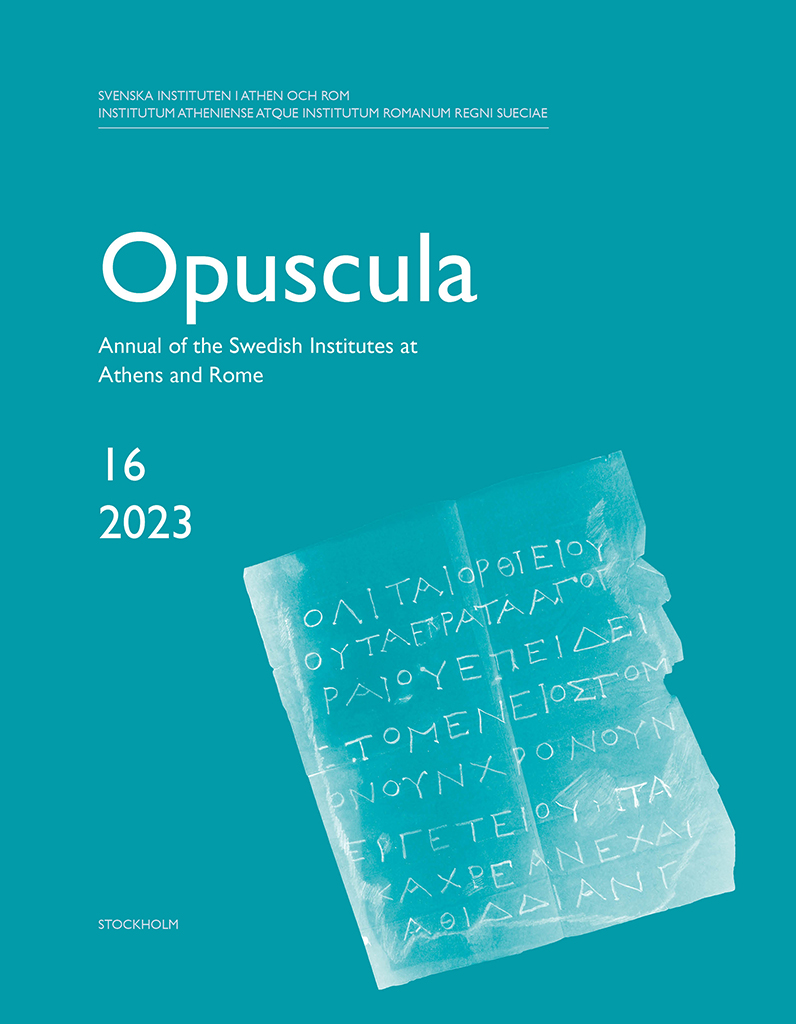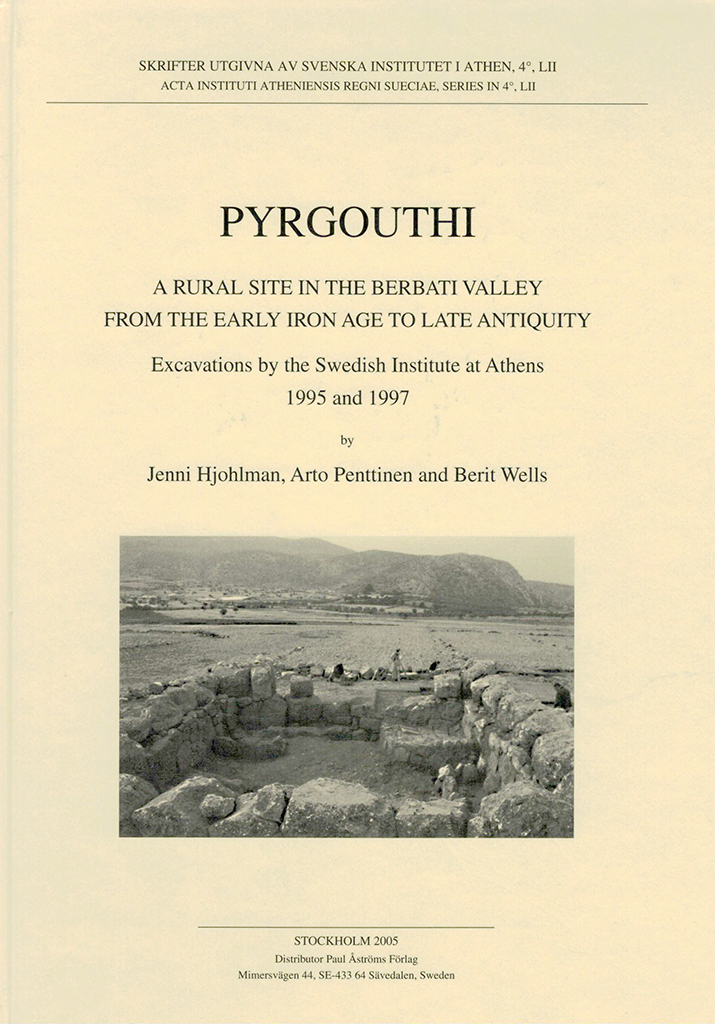Opuscula 16 is published by the Swedish Institutes at Athens and Rome. Distributed by Eddy.se AB. View volume at ERIH PLUS. All content available with open access. A preliminary report on sculptures and figurative terracottas found at the site of Vlochos, region of Karditsa, Thessaly By Stelios Ieremias & Robin Rönnlund Abstract The existence of an ancient city at Thessalian Vlochos was first established by the discovery in 1964 of several inscribed stelai at a quarry at the site, which in turn prompted its declaration as a protected archaeological zone. A large spoil-heap with mixed soils and quarry debris had been left after the closure of the quarry, and this was examined and removed as part of the ongoing Greek-Swedish archaeological collaboration at the site. Apart from quarry debris and rubbish, the soils of the heap yielded considerable amounts of pottery and tile, and also architectural members, terracotta figurines, stelai, marble statuettes, and votives. The mixed nature of the soils made all finds ex situ, but the composition of the material provides a transect of the chronology of the site at Vlochos, as well as strong indications of cult, including evidence for the cult of the Thessalian goddess Ennodia. Bibliographical information…
Distributed by Astrom Editions. View record at WorldCat. Pyrgouthi. A rural site in the Berbati Valley from the Early Iron Age to Late Antiquity. Excavations by the Swedish Institute at Athens 1995 and 1997 By Jenni Hjohlman, Arto Penttinen & Berit Wells, with contributions by Yannis Bassiakos, Katie Theodorakopoulou, Hero Granger-Taylor, Sven Isaksson, Petros Lymberakis, Dimitra Mylona, Maria Ntinou, Anaya Sarpaki & George Syrides This volume presents the results of the excavations in 1995 and 1997 at Pyrgouthi in the Berbati Valley, Argolis, Greece. The toponym is the local denomination for a Hellenistic tower, which has always been a prominent in the landscape. In the surface survey of the valley in 1988–1990 the tower was perceived as part of a Classical farmstead and in the ensuing excavation project it was targeted as such. However, the excavations revealed that this interpretation corresponded to but a fraction of the truth. The tower had been built on a knoll in the center of the valley but the earliest human activities at the site can be dated to the end of the Early Iron Age or the eight century BC. At this point in time, Arto Penttinen argues, the archaeological record can be reconciled…


